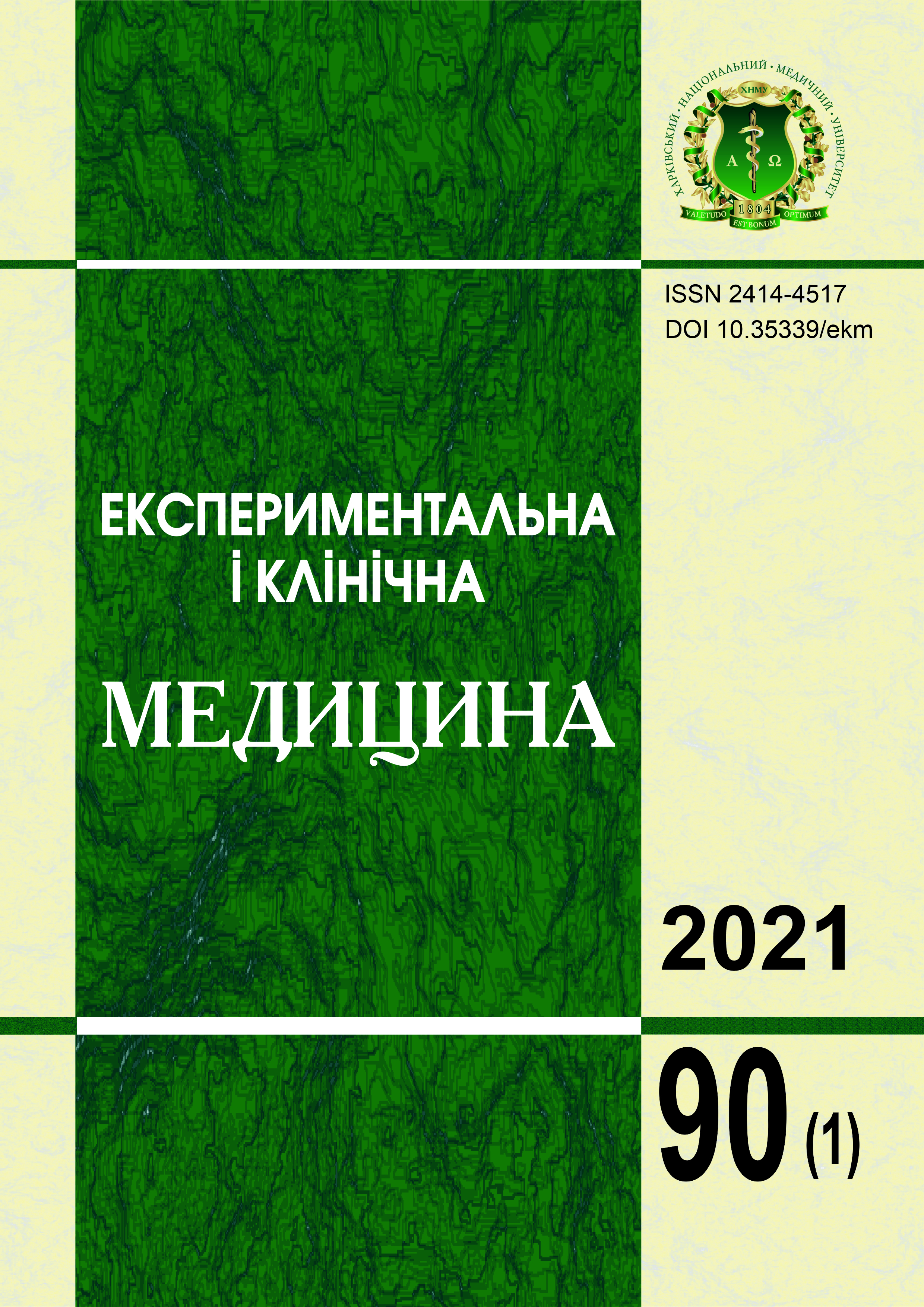Abstract
This study was carried out to reveal the influence of mechanical energy, which triggers a whole cascade of pathological and compensatory processes of different depth and duration in the brain in traumatic brain injury (TBI). One of the most common consequences of TBI is impaired working memory – the ability to temporarily hold small pieces of information necessary for current mental activity. The aim of the work is to study the relationship between the TBI mechanism and the types of brain damage, as well as the consequences of trauma in patients of different ages. 95 case histories of patients with closed TBI were studied. All patients were treated in the Neurosurgical department of the Emergency hospital, Chernivtsi. Among them were 76 men and 19 women. The study found that TBI of patients in most cases was obtained as a result of traffic and others accidents. All patients had closed TBI. Contusion foci in all age groups were equally identified in the frontal, temporal and occipital lobes, less in the parietal lobe. The incidence of contusion increased slightly with increasing age of patients. In the presence of hemorrhages in patients, hemiparesis and liquor-hypertensive syndrome occurred. In men, TBI was more common than in women, and was expressed as moderate brain contusion, subacute and chronic compression of the brain. This TBI development was more common in young patients. It is promising to further study the nature of combined TBI in people of all ages and analyze the results of specialized neurosurgical care.
Keywords: traumatic brain injury, neurosurgical care, liquor-hypertensive syndrome.
References
Alnemari AM, Krafcik BM, Mansour TR, Gaudin D. A Comparison of Pharmacolog-ic Therapeutic Agents Used for the Reduction of Intracranial Pressure After Traumatic Brain Injury. World Neurosurgery. 2017;106:509-28. DOI: 10.1016/j.wneu.2017.07.009. PMID: 28712906.
Vella MA, Crandall ML, Patel MB. Acute Management of Traumatic Brain Injury. Surgical Clinics of North America. 2017;97(5):1015-30. DOI: 10.1016/j.suc.2017.06.003. PMID: 28958355; PMCID: PMC5747306.
McGinn MJ, Povlishock JT. Pathophysiology of Traumatic Brain Injury. Neurosur-gery Clinics of North America. 2016;27(4):397-407. DOI: 10.1016/j.nec.2016.06.002. PMID: 27637392.
Paterno R, Folweiler KA, Cohen AS. Pathophysiology and Treatment of Memory Dysfunction After Traumatic Brain Injury. Current Neurology and Neuroscience Reports. 2017;17(7):52. DOI: 10.1007/s11910-017-0762-x. PMID: 28500417.
Skaansar O, Tverdal C, Rønning PA, Skogen K, Brommeland T, Røise O, et al. Traumatic brain injury – the effects of patient age on treatment intensity and mortality. BMC Neurology. 2020;20(1):376. DOI: 10.1186/s12883-020-01943-6. PMID: 33069218.
O'Leary RA, Nichol AD. Pathophysiology of severe traumatic brain injury. Journal of Neurosurgical Sciences. 2018;62(5):542-8. DOI: 10.23736/s0390-5616.18.04501-0. PMID: 29790727.
Thatte U, Puri K, Suresh K, Gogtay N. Declaration of Helsinki, 2008: Implications for stakeholders in research. Journal of Postgraduate Medicine. 2009;55(2):131-4. DOI: 10.4103/0022-3859.52846. PMID: 19550060.
Council of Europe. Convention for Protection of Human Rights and Dignity of the Human Being with Regard to the Application of Biology and Biomedicine: Convention on Human Rights and Biomedicine. Kennedy Institute of Ethics Journal. 1997;7(3):277-90. DOI: 10.1353/ken.1997.0021. PMID: 11660359.
Shemyakov SE, Nikolenko VN, Sarkisyan KD. Age-Related Changes in Morphomet-ric Parameters of Hippocampal Neurons in Humans. Neuroscience and Behavioral Physiology. 2017;47(6):613-6. DOI: 10.1007/s11055-017-0442-y. PMID: 30136816. [In Russian].
Moeini M, Lu X, Avti PK, Damseh R, Bélanger S, Picard F, et al. Compromised mi-crovascular oxygen delivery increases brain tissue vulnerability with age. Scientific Reports. 2018;8(1):8219. DOI: 10.1038/s41598-018-26543-w. PMID: 29844478.
Edlmann E, Giorgi-Coll S, Whitfield PC, Carpenter KL, Hutchinson PJ. Pathophys-iology of chronic subdural haematoma: inflammation, angiogenesis and implications for phar-macotherapy. Journal of Neuroinflammation. 2017;14(1):108. DOI: 10.1186/s12974-017-0881-y. PMID: 28558815.
Kobek M, Skowronek R, Jankowski Z, Pałasz A. Angiogenesis in brain contusion. Archives of Forensic Medicine and Criminology. 2015;2:112-24. DOI: 10.5114/amsik.2015.53227. PMID: 26284969.
Campbell JC, Anderson JC, McFadgion A, Gill J, Zink E, Patch M, et al. The Ef-fects of Intimate Partner Violence and Probable Traumatic Brain Injury on Central Nervous System Symptoms. Journal of Women's Health. 2018;27(6):761-7. DOI: 10.1089/jwh.2016.6311. PMID: 29083256.
Compton E. Paroxysmal Sympathetic Hyperactivity Syndrome Following Traumatic Brain Injury. Nursing Clinics of North America. 2018;53(3):459-67. DOI: 10.1016/j.cnur.2018.05.003. PMID: 30100010.

